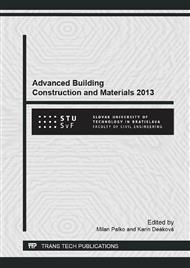p.195
p.199
p.202
p.206
p.211
p.215
p.219
p.225
p.229
Divide of Cavity in Timber Frame Construction
Abstract:
The issue of calculating the fire resistance of timber structures is discussed in detail in European Standard EN 1995-1-2. In the calculation it is possible to combine different materials, joints and effect of cavities on the spread of fire. The problem occurs if the design is underestimated, the realization of construction or choice of materials. Improperly designed geometry, poorly chosen materials, products or systems contribute to the intensity of the fire. It is important to remember properties of the individual components of a structural element and subsequent interaction during a fire. Article simply analyses the impacts of possible choices of different products and their behavior in fire. The article is based on EN 1995-1-2:2004 [.
Info:
Periodical:
Pages:
211-214
Citation:
Online since:
December 2013
Authors:
Price:
Сopyright:
© 2014 Trans Tech Publications Ltd. All Rights Reserved
Share:
Citation:


